Antepartum Testing Class
Antepartum Testing Class
9:00 to 12:00 10/29/09
The guidelines proposed by the National Institute of Child Health and Human Development (NICHD) for the interpretation of fetal heart rate tracings are generally applicable to antepartum testing. However, as of this posting, they do not define reactivity.
A non stress test (NST) is considered reactive when two or more fetal heart rate accelerations peak (but do not necessarily remain) at least 15 beats per minute above the baseline and last 15 seconds from baseline to baseline within a 20 minute period with or without fetal movement discernible by the woman.
The following presentation discusses the NICHD guidelines and antepartum testing:
Antepartum Testing (Powerpoint)
The following are 3 of 18 patients ,reviewed during the class, that had been seen for antepartum testing.
(Click on images to enlarge)
Case 1
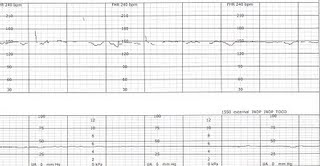
9:00 to 12:00 10/29/09
The guidelines proposed by the National Institute of Child Health and Human Development (NICHD) for the interpretation of fetal heart rate tracings are generally applicable to antepartum testing. However, as of this posting, they do not define reactivity.
A non stress test (NST) is considered reactive when two or more fetal heart rate accelerations peak (but do not necessarily remain) at least 15 beats per minute above the baseline and last 15 seconds from baseline to baseline within a 20 minute period with or without fetal movement discernible by the woman.
The following presentation discusses the NICHD guidelines and antepartum testing:
Antepartum Testing (Powerpoint)
The following are 3 of 18 patients ,reviewed during the class, that had been seen for antepartum testing.
(Click on images to enlarge)
Case 1


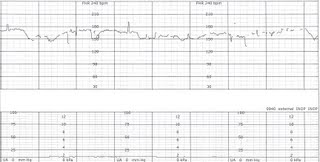
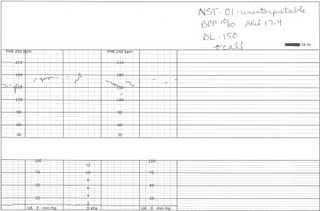
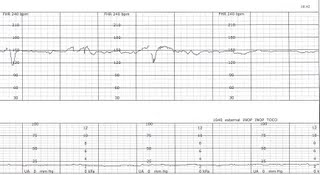
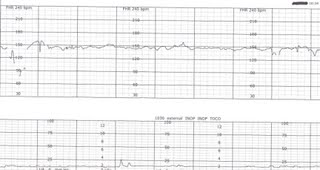
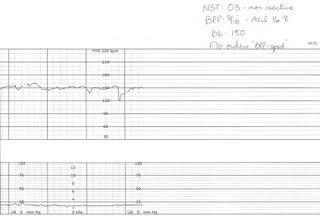

3 Comments:
Case 1 : Nonreactive BPP 8/10.
For the biophysical profile in twins it was suggested during the class that the maximum vertical pocket be used for each twin instead of obtaining a combined AFI. Oligohydramnios would be defined as the largest pocket of amniotic fluid less than 2 cm in two perpendicular planes. We will review the literature to see if there is an agreed upon method for evaluating the amniotic fluid in multiple gestations.
The normal range for the single deepest pocket in twin gestation appears to be 2.2 cm to 7.5 cm [1]
1. Magann EF,et al The ultrasound estimation of amniotic fluid volume in diamniotic twin pregnancies and prediction of peripartum outcomes. Am J Obstet Gynecol. 2007;196(6):570. PMID: 17547899
Thanks to Dr. Ramen Chmait for answering the question.
Post a Comment
<< Home